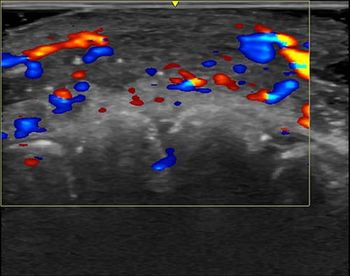
New Magnetic Sensor Picks Up Weaker Brain Waves, Potentially Improving Diagnosis
Optically pumped magnetometer sensor detects magnetic signals that could augment the detection of traumatic brain injury and disease.
A newly developed sensor can measure weak magnetic brain signals that are easier to pinpoint than the electrical signals picked up by electroencephalogram.
These magnetic signals, measured by magnetoencephalography (MEG), are useful for earlier and more accurate diagnosis, potentially improving how providers understand connectivity in the brain and detecting signs of traumatic brain injury, dementia, and schizophrenia.
A team from the University of Birmingham in the United Kingdom published their work recently in
“We know that early diagnosis improves outcomes and this technology could provide the sensitivity to detect the earliest changes in brain activity in conditions like schizophrenia, dementia, and ADHD,” said Ole Jensen, neuroscience professor and co-director of the University of Birmingham’s Centre for Human Brain Health.
For more coverage based on industry expert insights and research, subscribe to the Diagnostic Imaging e-Newsletter
To reach that goal, a team of scientists led by Anna Kowalczyk, a physicist with the School of Physics and Astronomy and the School of Psychology, designed a new optically pumped magnetometer (OPM) sensor that uses polarized light to detect changes in orientation of the way atoms spin when they are exposed to a magnetic field. These sensors are used in the MEG laboratories.
According to their results, not only do these sensors do a better job than commercially available sensors of detecting brain signals, but they also can distinguish them from background magnetic noise. Being able to make that differentiation means there is a possibility of MEG testing outside a specialized unit or hospital ward.
In addition, Kowalczyk said, the OPM sensor does not require a helium-cooling system to keep it constantly cool, nor does it need a zero-magnetic field environment to pick up brain signals. As a result, she said, the expectation is that these new sensors will extend the use of MEG for diagnosis and treatment.
The team is currently looking for research partners, they said, to explore how this sensor can be used for better diagnostics in neurological injury, neurological disorders, such as dementia, and psychiatric disorders, such as schizophrenia.
Newsletter
Stay at the forefront of radiology with the Diagnostic Imaging newsletter, delivering the latest news, clinical insights, and imaging advancements for today’s radiologists.




























